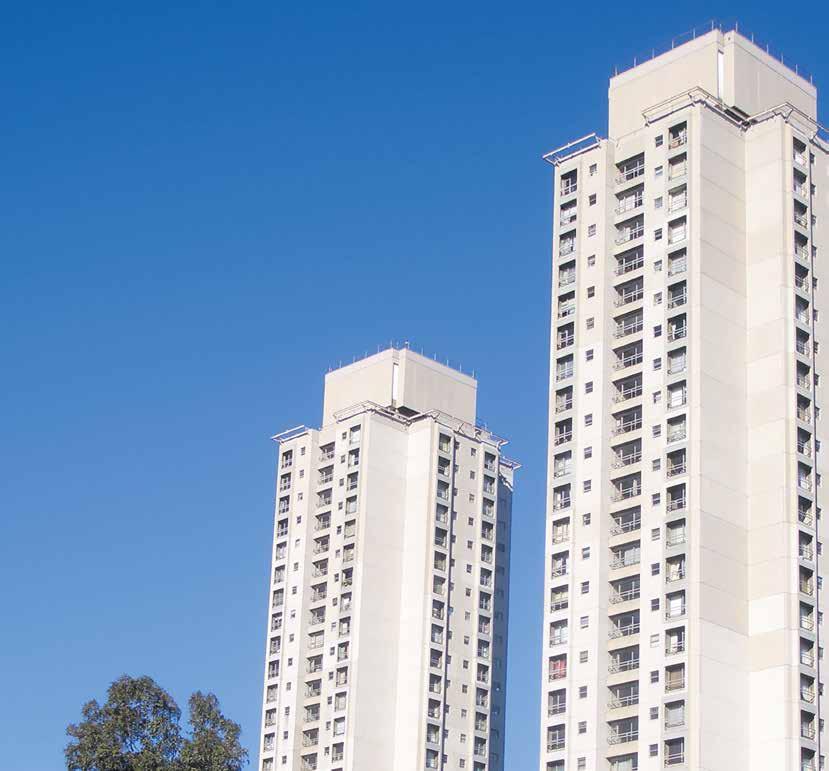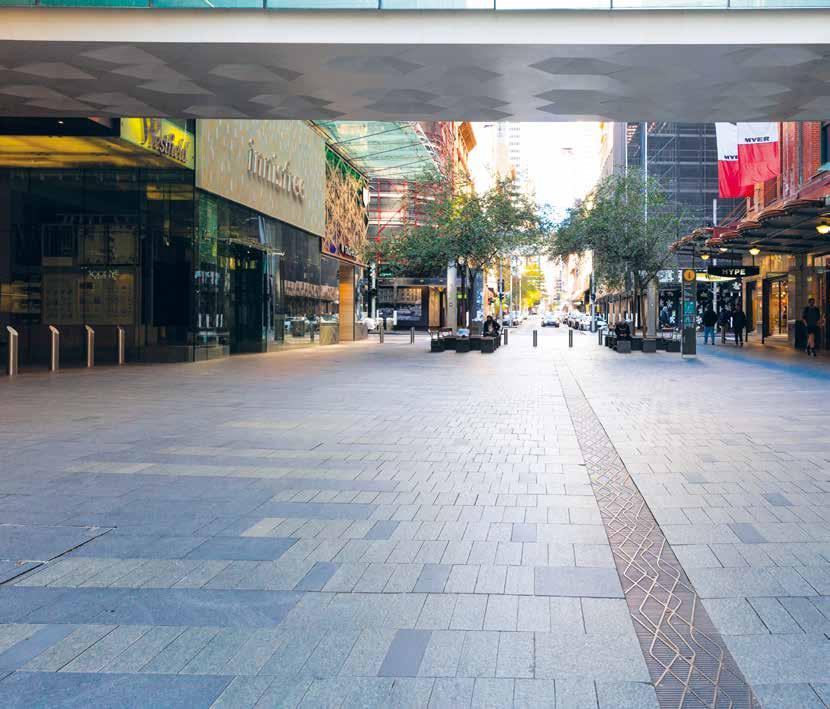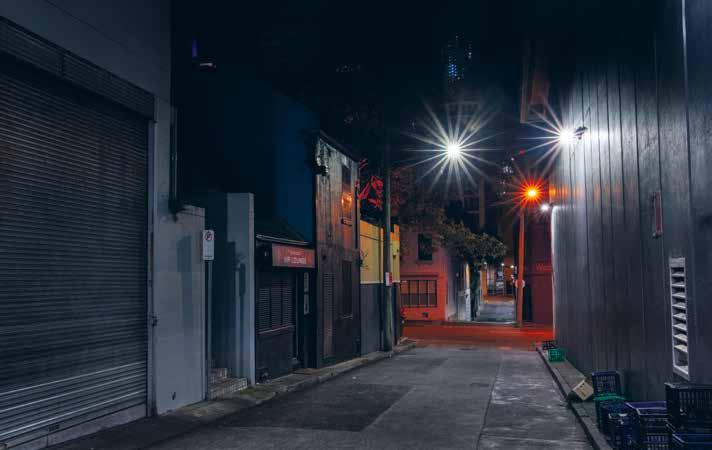
7 minute read
A force to be reckoned with
A FORCE TO BE RECKONED WITH LYALL MUNRO SNR WAS CONSIDERED A LEGEND OF THE LAND RIGHTS MOVEMENT. BUT, AS JAKE KENDALL REPORTS, HE SAW HIMSELF AS FUNDAMENTALLY A BLACK FELLA FIGHTING FOR HIS MOB.
A19-year-old Lyall Munro was in a Moree pub sipping on an orange juice when an Aboriginal elder sud denly appeared at his side. He was told the old folks wanted a word. Munro — looking dapper in his station mas ter’s uniform — followed the man down to the riverbank where he was confronted by a barrage of questions. “How come you have a job on the rail way?” “How come you’ve got citizens’ rights?” “How come you can play foot ball and get served in pubs with the white fellas? That an Indigenous Aus tralian was afforded such civil liberties was extremely rare at the time. Munro was then given a list of instructions on what to do to help his mob attain the same freedoms that he enjoyed.
Advertisement
“Uncle” Lyall Munro Snr — who passed away in May — lived by those instructions all his life. “I never read out of books or went to university,” Munro said in a 2014 interview with the NSW Aboriginal Land Council (NSWALC), “I based all my involvement [in Aboriginal rights] around Australia and internationally on the advice of them old people.” Munro later recalled: “I left that riverbank a lot wiser.”
It was the 1950s and, back then, the white lawmakers of the NSW northern town of Moree implemented a strict policy of segregation. “You couldn’t swim in the pool if you were unhy gienic people — and that was aimed at the Aboriginals,” explained Munro. “You couldn’t walk on the footpath, get served in pubs and clubs or cafés. Or sit at the back in picture shows — you could sit down the front, but not up the back.”
The pool Munro was referring to formed part of the Moree Baths. Which, in 1965, became the focal point for a landmark Indigenous civil rights protest. Led by Aboriginal activist Charles Perkins, a group of University of Sydney students had organised a bus
Lyall Munro (second from left), Les, Chock and a couple of other men at the Welcome to the Block and Eora Country murals. Photographer Patricia Baillie, courtesy City of Sydney Archives
tour of NSW towns to draw attention to Indigenous inequality. The Freedom Riders, as they called themselves, arrived in Moree on 19 February. Later that day, having collected a number of Aboriginal children from the local mission, Perkins attempted to gain entry into the Moree Baths.
Munro and the Moree Aboriginal Advancement Committee had been fighting against the town’s racist by-laws long before the students arrived in town. “We were fighting for the cause but not in the manner in which the Freedom Riders done,” Munro told NITV in 2017, “so we stood and watched in the crowd. It was their day and it was an ugly scene, pretty rowdy, pretty wild — a lot of violence.”
The protest captured the attention of the media and the racial injustice
directed at Aboriginal people in rural towns was plain for all Australians to see. “It was like the Deep South of America,” said Munro. “[Perkins] was just trying to take these Aboriginal kids and give them a swim in the pool and hundreds of people turned out to stop them.” The event proved to be a seminal moment in Australian history. At a public meeting in Moree soon after, the town decided to desegregate the pool and lift the colour ban.
Munro was born in the small town of Tingha — home of the Kamilaroi Nation. But it would be Moree where Munro would put down roots with his wife, Carmine — known as “Maggie” — and their 12 children. Following the elders’ call to arms on the riverbank, Munro immersed himself in a lifelong fight for Aboriginal rights. Particularly land rights.
In response to Munro’s death, Northern Tablelands MP, Adam Marshall, said: “Uncle Lyall is regarded as an important and prominent Aboriginal land rights advocate in Australia and especially in NSW.” NSWALC chair, Anne Dennis, said his dedication to the cause would be one of his greatest legacies. “Uncle Lyall Munro Snr was deeply involved with land rights for decades and his commitment to his people remained constant his entire life. He called for independence, self-reliance, and the social rights necessary for all Aboriginal people to share in society: the rights to education, employment, legal services, medical services, and a decent standard of living.”
To list just a few of Munro’s many accomplishments: he helped establish the NSW Aboriginal Legal Service, the Aboriginal Medical Service, the Tent Embassy, and actively contributed to the Royal Commission into Aboriginal Deaths in Custody. He was a member of the NSW Aborig inal Advisory Council, the NSW Aboriginal Lands Trust, and the National Aboriginal Consultative Committee. Also — as a direct descendant of the victims and survi vors of the Myall Creek Massacre — Munro lobbied for the creation of a memorial to commemorate the 28 unarmed Indigenous Australians killed by a group of colonists in 1838. “We challenged the system,” Munro once said. “A solid brick wall, 200 years in the making.”
Challenging the system often proved dangerous. One time, according to Munro, the family’s Moree home was “shot up”, a bullet missing Maggie by just “six inches”. Such incidents, however, never deterred Munro. “Wearing his iconic black hat, Uncle Lyall was a force to be reckoned with,” said Marshall. “The legacy of Munro will be felt by many, for generations to come.” For Munro, however, it wasn’t about creating a legacy; it was about fighting for his mob and remaining true to himself. “I stayed a black person,” he once said. “I’m still a black person. And I’ll live and die as a black person.”
LAND RIGHTS — THE MILESTONES
1963: YIRRKALA BARK PETITIONS The Australian government appropriates more than 300sqkm of land from the Yolngu people in Yirrkala, Arnhem Land and sells it to a mining company. In protest, the Yolngu create petitions on bark using painted designs to proclaim ownership. These petitions are sent to the Australian parliament where a committee recommends that compensation be paid, that sacred sites be protected, and that mining works be monitored. This is not enough and the Yolngu people appeal to the Northern Territory Supreme Court. Handing down a decision in 1971, the judge — while accepting that the Yolngu have lived at Yirrkala for tens of thousands of years — upholds terra nullius and determines that Australian law does not recognise native title. 1966: WAVE HILL WALK OFF Led by Vincent Lingiari, more than 200 Gurindji stockmen initiate a strike at the Wave Hill cattle station in the Northern Territory. Initially, the station owners believe the workers will return when offered improved wages and conditions. But Lingiari has other ideas: the rightful return of native land. During nine years of struggle and protest, Lingiari tours Australia to lobby politicians and galvanise support. Victory is achieved in 1975, when prime minister Gough Whitlam ceremonially pours earth into Lingiari’s hand to indicate the return of the land to the Gurindji people. 1982: MABO Eddie Koiki Mabo and four other Indigenous Meriam people begin a legal claim for ownership of their traditional lands on the island of Mer in the Torres Strait. They claim that the Meriam people have continuously and exclusively possessed their lands; lived in permanent settled communities; and had formed structured political and social organisations on the island. The case runs for ten years, progressing from the Queensland Supreme Court to the High Court of Australia. On the 3rd of June 1992, the High Court rules that the Meriam people are “entitled as against the whole world to possession, occupation, use and enjoyment of (most of) the lands of the Murray Islands”. The High Court’s judgement removes the notion of terra nullius once and for all and introduces native title into Australian law.
1993: WIK DECISION The Wik and Wik Way people claim an area on the west coast of Cape York Peninsula, in far-north Queensland. It raises the question of whether Australian law recognises that native title can co-exist on some types of pastoral leases — the Mabo case ruled that pastoral leases nullified native title. In a ruling described as “a tectonic shift in justice”, the High Court’s decision in December 1996 establishes that native title can co-exist on Crown Land leased to other interests.
While significant progress has been made by Aboriginal people to gain native title, there is still a way to go. As of 2020, Aboriginal and Torres Strait Islander peoples’ land rights are recognised across only 40 percent of the Australian continent.








